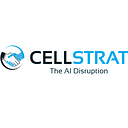We are 10 days into the New Year. The resolutions are strong and the will to conquer everything is fresh in our minds. Make use of the swirl of energy in you to invest time in upskilling yourself in these top tech areas if you’re looking for an upbeat and productive tech career this year.
The tech industry is going in a direction that makes all the hollywood sci-fi movies real. We have brought five hot new areas that you might be interested in picking your brain with.
- Internet of Behaviour (IoB)
Internet of Behaviours (IoB) tries to find how data might be better understood and be used to develop and sell innovative products by incorporating the perspective of human psychology. It is essentially an extension of IoT. The field is a perfect combination of Technology, Behavioral Science and Data Analytics.
The IoB seeks to understand the data gathered from users’ online behaviours from the perspective of behavioral psychology. Its goal is to provide a solution to the question of how to understand data and how to use that knowledge to the development and promotion of new products, all from the standpoint of human psychology.
2. Human Augmentation
Human augmentation refers to technology that improves human productivity or capability, or that adds to the human body in some way. Modern technological breakthroughs have resulted in a wider range of implants and other technology that might be classified as human augmentation.
There are many different types of human augmentation technologies. There are devices and implants that contribute to more advanced sensory devices, such as cochlear implants. Orthotics or limb devices can enhance motion or muscle capability. Some augmentation may work with specific sorts of IT resources, like big data assets.
3. Everything-as-a-Service(XaaS)
Everything-as-a-Service (XaaS) is a cloud computing phrase for the wide range of services and applications that are becoming available for customers to consume on-demand over the Internet rather than on-premises. It allows you the freedom to customize your computing settings on-demand to create the experiences you want.
Because the servers are stored in a warehouse or, in some cases, locally, XaaS distributes services over the cloud rather than on-site software solutions, giving enterprises more flexibility. Companies that use cloud computing to supply their services may easily serve millions of customers all over the world. Products are generally deployed on online platforms available to users at login under a XaaS approach.
4. Tactile Virtual Reality
Tactile virtual reality is a new type of virtual environment. It’s a digital simulation based on VR technology, like any VR. It produces a multi-sensory virtual experience based on sound, sight, and touch that is entirely interactive. This gives people the impression that the digital information they see and hear is also touchable.
Full sensory VR uses both old and modern technology to attain this level of immersion. Tactile VR makes use of a virtual reality headset as well as kinetic features in a physical environment or clothing. A haptic digital architectural environment, as well as numerous virtual reality bodysuits and gloves, are examples of this. The kinetic elements in these components stimulate the human body with various stimulants, causing it to experience artificial stimulation as touch. This haptic touch technology, in addition to the digital information users receive from the VR headset, is what you experience as tactile VR. However, we must first describe haptics and haptic technology in order to fully comprehend how tactile VR technology works.
5. Intelligent Process Automation
‘Anything that can be automated, should be automated,’ is the core premise of robotic process automation. We’ve discovered something even more intriguing this year: Intelligent Process Automation. In a word, IPA enables bots to benefit from AI, Big Data, and Machine Learning capabilities, allowing them to learn and improve over time. This aids in the evolution of these clever bots from the ‘If-this-then-that’ rule. Investment in IPA is predicted to reach $232 billion by 2025, as automation usage grows. Artificial intelligence and machine learning algorithms are used to automate or optimize tasks in intelligent process automation (IPA). In a variety of corporate processes, IPA tools can reduce human intervention. IPA solutions are more than just a set of rules. IPA solutions, for example, can use artificial intelligence to process unstructured data, which many RPA tools can’t, or to provision IT resources to guarantee important SLAs are met. Another example is the employment of machine learning algorithms in the IPA tool, which allows it to enhance task performance over time.
Note : Are you already a world class AI / ML Data scientist with extensive expertise in advanced AI ? Then check out the CellStrat Research Fellow Program.
DETAILED SYLLABUS AVAILABLE ON REQUEST — contact Team CellStrat at phone or whatsapp no +91–9742800566 or email contact@cellstrat.com.
